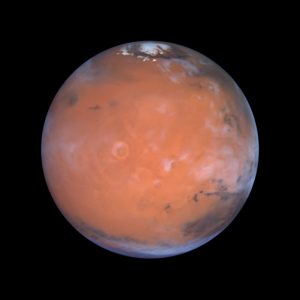En Valdivia, Paillaco, Máfil y Panguipulli se celebrará el Día de la Astronomía en Los Ríos
El evento para toda la familia se desarrollará el miércoles 18 de marzo desde las 18:30 horas en la Carpa de la Ciencia del Centro de Estudios Científicos (Yungay esquina Libertad).
La Dra. Priscilla Nowajewski será la encargada de la conferencia central del Día del Astronomía en Los Ríos, una iniciativa del PAR Explora Los Ríos del Ministerio de Ciencia, Tecnología, Conocimiento e Innovación, y el Centro de Estudios Científicos. La charla titulada “5 razones para ir a Marte” se desarrollará en el auditorio de la Carpa de la Ciencia del CECs y las entradas gratuitas ya están disponibles en línea a través del sitio del PAR Explora Los Ríos y sus redes sociales. La actividad contará con intérprete de lengua de señas.
La Dra. Nowajewski es Presidenta y fundadora de la Fundación Ciencias Planetarias, y representante en Chile de The Mars Society. Es experta en manipular y analizar grandes cantidades de datos astronómicos y metereológicos aplicando herramientas de Big Data y Machine Learning. En su conferencia contará cuáles son algunas razones para viajar al planeta rojo, en su blog adelanta la primera: la curiosidad. “No sabemos que nos depara la aventura y lo único que vemos es un nuevo mundo por explorar. Los seres humanos somos exploradores innatos. Lo llevamos en la sangre. Aunque algo nos asuste, lo terminamos haciendo igual” señala.
“Comenzamos el año destacando la importancia de la ciencia astronómica en Chile y especialmente relevando en Los Ríos a dos destacadas investigadoras del área. En esta ocasión queremos continuar acercando a la familia a este evento ya que el año pasado tuvimos una muy buena acogida de esta iniciativa” señaló el director del PAR Explora Los Ríos, Dr. Ronnie Reyes Arriagada. También destacó que el PAR refuerza la visibilización de las mujeres en áreas científicas históricamente dominadas por hombres, como la astronomía.
Además de la “gala marciana” se desarrollarán actividades en establecimientos educacionales de Máfil, Paillaco y Panguipulli. El jueves 19 de marzo la Dra Nowajewski se trasladará al Liceo Gabriela Mistral de Máfil para volver a presentar su conferencia. Mientras que el viernes 20 de marzo será el turno para estudiantes de Paillaco con la astrónoma Erika Labbé, coordinadora de difusión del Núcleo de Astronomía de la Universidad Diego Portales.
Labbé desarrollará un taller inclusivo para personas con discapacidad visual en Paillaco y por la tarde una capacitación a docentes de Panguipulli.
El Día de la Astronomía se celebra desde el 2014 durante las jornadas cercanas al equinoccio, como una forma de destacar la importancia de esta ciencia para Chile y potenciar su integración con otras áreas del conocimiento como la ingeniería, matemáticas, informática, biología, historia, arte, entre otras.
Enlace de entradas gratuitas: https://www.eventbrite.cl/e/97152841765


Taking advantage of Mars’s closest approach to Earth in eight years, astronomers using NASA’s Hubble Space Telescope have taken the space- based observatory’s sharpest views yet of the Red Planet. The telescope’s Wide Field and Planetary Camera 2 snapped these images between April 27 and May 6, when Mars was 54 million miles (87 million kilometers) from Earth. From this distance the telescope could see Martian features as small as 12 miles (19 kilometers) wide. The telescope obtained four images, which together show the entire planet. Each view depicts the planet as it completes one quarter of its daily rotation. In these views the north polar cap is tilted toward the Earth and is visible prominently at the top of each picture. The images were taken in the middle of the Martian northern summer, when the polar cap had shrunk to its smallest size. During this season the Sun shines continuously on the polar cap. Previous telescopic and spacecraft observations have shown that this summertime «residual» polar cap is composed of water ice, just like Earth’s polar caps. These Hubble telescope snapshots reveal that substantial changes in the bright and dark markings on Mars have occurred in the 20 years since the NASA Viking spacecraft missions first mapped the planet. The Martian surface is dynamic and ever changing. Some regions that were dark 20 years ago are now bright red; some areas that were bright red are now dark. Winds move sand and dust from region to region, often in spectacular dust storms. Over long timescales many of the larger bright and dark markings remain stable, but smaller details come and go as they are covered and then uncovered by sand and dust. This image is centered on the region of the planet known as Tharsis, home of the largest volcanoes in the solar system. The bright, ring- like feature just to the left of center is the volcano Olympus Mons, which is more than 340 miles (550 kilometers) across and 17 miles (27 kilometers) high. Thick deposits









